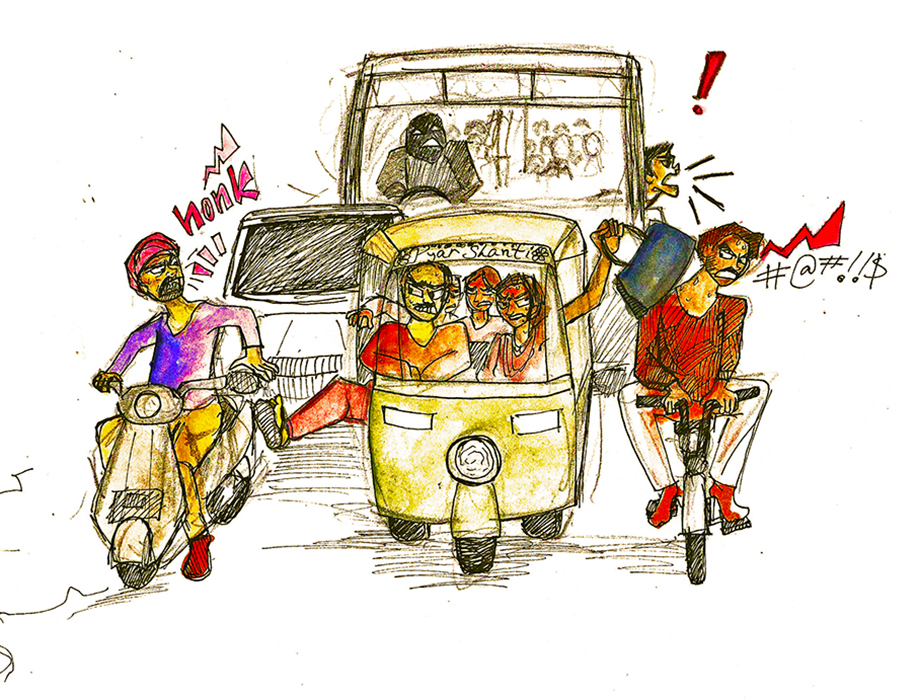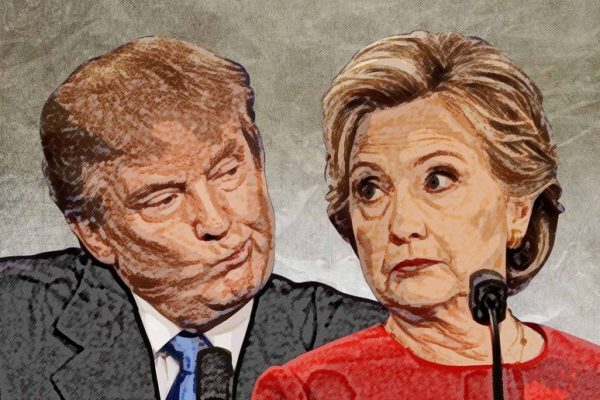We need to make sense of the senseless violence that breaks out in this time of the year, says Thomas Crowley.
The summer is here in Delhi, which can only mean one thing: a marked increase in senseless violence. An article in The Times of India, published on May 11, reported that there have been ten recent incidents of road rage ending in “gruesome murders or victims being brutally beaten up.” The case that generated the most media attention was the murder of a 42-year-old Delhi Transport Corporation (DTC) bus driver, who was beaten to death by a 19-year-old student, whose mother allegedly cheered him on. The mother-son duo had been riding on a two-wheeler that the bus had hit, throwing the mother to the ground. The mother emerged from the accident with a few scrapes and bruises, but the bus driver paid for it with his life.
Some bloggers have mocked attempts to tie the increasing violence to rising temperatures, while offering even more implausible explanations: the persistence of a feudal mindset, or a lack of CCTV cameras. But it turns out that several scientific studies have backed up the intuitive claim that, as temperatures increase, tempers flare. (This also accords with the everyday language we use to describe anger: things are heating up, he’s hot-headed.) A psychology professor named Craig Anderson has crunched the numbers and reached the simple conclusion that “uncomfortably hot temperatures increase irritability, which in turn increases aggressive behavior, including violent crime.” A later study made an even more sweeping claim: that this connection between extreme weather and conflict was true across societies and throughout history, from the Akkadian Empire in 2000 BC to the road rage cases of the present day.
The common sense (and now scientifically-backed) connection of physical heat and emotional heat provides the guiding metaphor for the 1989 American film Do the Right Thing. Returning to this film, twenty-six years after its release, may provide some insight into the violence that plagues Delhi every summer, as well as the fault-lines that continue to divide America society.
The similarity with recent events at Baltimore is less due to Lee’s prophetic power and more due to the depressing persistence of racial inequality, institutionalised violence and socio-economic segregation in the United States.
Directed and written by the noted African-American auteur Spike Lee, the film traces the hottest day of the summer as it unfolds in one neighbourhood in New York. In the beginning of the film, a radio DJ announces, “I have today’s forecast for you: hot!” The early dialogue of the film is peppered with references to the heat, and, visually, the film drips with sweat—the head cameraman lit a butane lighter under the lens for many shots. As the day goes on, tensions build, largely between the different communities in the neighbourhood, particularly between the African-Americans who comprise a majority in the neighbourhood and an Italian-American family that runs a popular pizzeria. The movie famously ends with the tensions exploding into racial violence; the police kill an African-American youth and the crowd responds with arson and looting.
The recent events in the American city of Baltimore echo this sequence of events with eerie precision: a brutal police murder of a young black man, followed by anger, protest and looting. The similarity is less due to Lee’s prophetic power and more due to the depressing persistence of racial inequality, institutionalised violence and socio-economic segregation in the United States. The same story has been repeated over and over, with the (largely white) media showing an uncanny ability to forget about these inconvenient occurrences soon after they end, shoving them hastily into the nation’s collective unconscious. One of the heartening aspects of the “Black Lives Matter” campaign, which has emerged in response to police violence against African-Americans, is that it is forcing the matter into the national spotlight.
It is unfortunate that Do the Right Thing is still so relevant, but it also makes its insights all the more resonant. One of the most striking aspects of the film is its nuance and fair-mindedness. While Lee is passionately committed to showing the effects of endemic racism, he also gives his white characters remarkable complexity and depth. They might be racist, but they are not merely racist—they are (in many cases) compassionate, funny, aggrieved, struggling, conflicted, likable. This aspect of this film—its even-handedness—was appreciated by one of its early champions, the critic Roger Ebert, and ignored by the more callous early reviewers, who insisted that merely showing a race riot on screen to black audiences was enough to ignite real-life violence.
Lee is hardly inciting a riot. Instead, he is showing, through a series of dialogues and diatribes, the way that personal interactions, often full of friction, often based on inflated egos and wounded pride, are always situated in a larger political and social context. Given Lee’s attention to (often arrogant) individuals, some critics have misread the film as being essentially about the dangers of hubris, stripping it of its specifically political charge. But the climax of the film is structured by institutions of racism: the violence of the police, the economic exploitation of blacks unable to open a business in their own neighbourhood, the systematic dismissal of black culture (like calling rap “jungle music”). In his subtle, skilful way, he makes sense of the seemingly “senseless” violence that has often erupted in black neighbourhoods.
Lee is hardly inciting a riot. Instead, he is showing, through a series of dialogues and diatribes, the way that personal interactions, often full of friction, often based on inflated egos and wounded pride, are always situated in a larger political and social context.
Who will do the same for the murderous drivers of Delhi? It may be true that violence rises with temperatures, but this does not explain the specific types of violence that break out, or their underlying causes. For this, a chronicler like Lee is needed, someone to go beyond generalities about feudal mindsets and police corruption. Little has been reported about the teen who killed the bus driver, save his place of residence: Mundka, one of Delhi’s many “urban villages,” former agricultural zones that have been swallowed up by runaway urban growth. Was the teen from a family whose land was grabbed by the government to make way for the city? Or was he a recent migrant, competing with other recent migrants for the scarce resources available in the city? Knowing the answers to these questions would not justify his crime, but they would shine some light on the forces and structures that make it so difficult to do the right thing in an overheated city.















